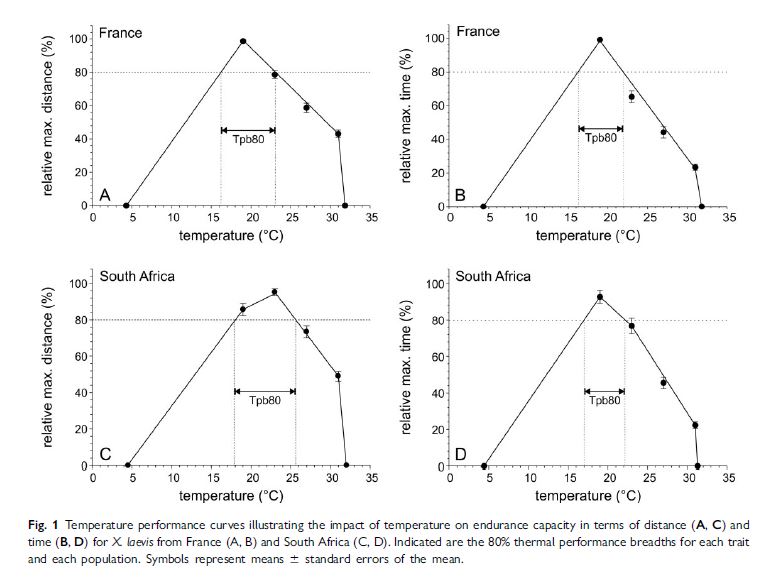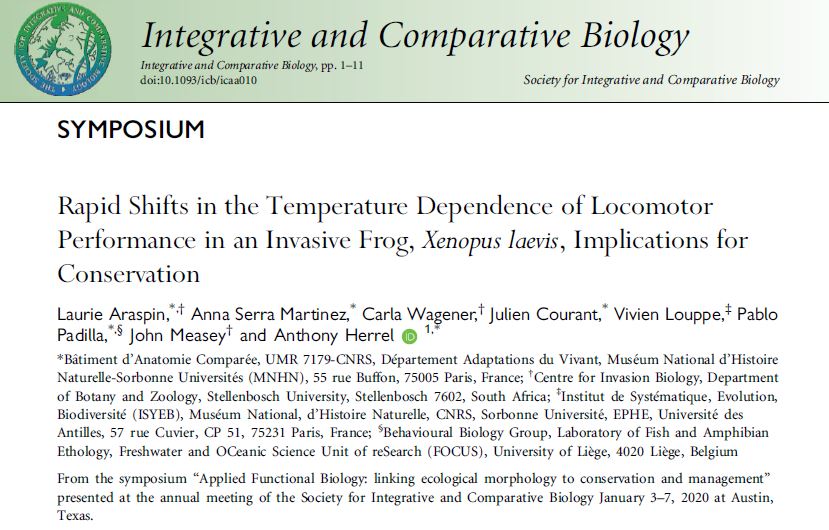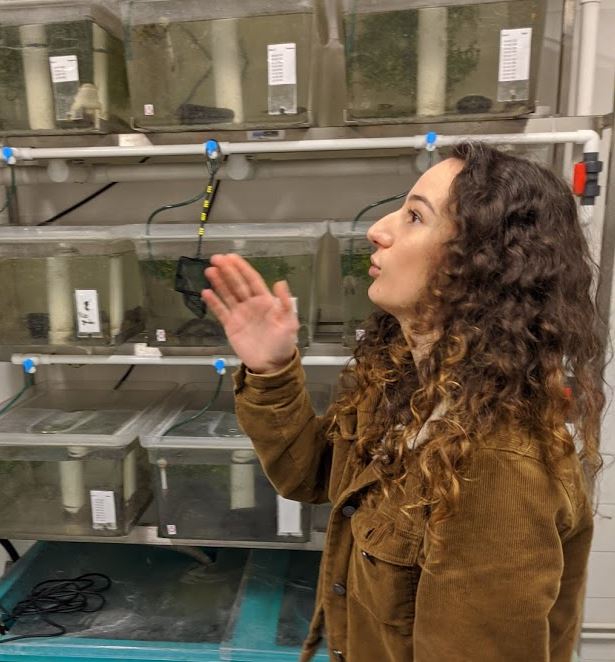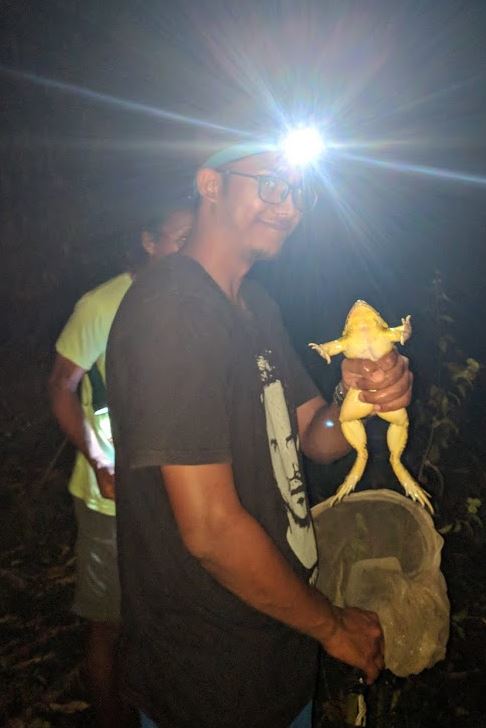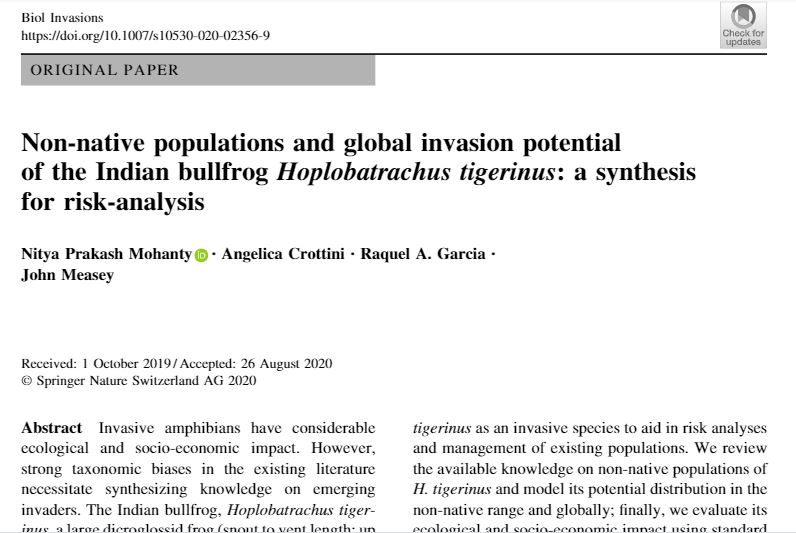MeaseyLab at the 7th Annual Meeting of the Canadian Herpetological Society
Drs Natasha Kruger and James Baxter-Gilbert both presented their work at the 7th Annual Meeting of the Canadian Herpetological Society online today.
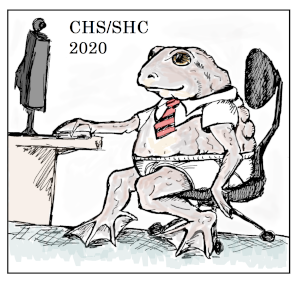
Perhaps the most remarkable event was that Natasha's talk coincided with local loadshedding (a South African term for a scheduled electricity blackout). Natasha then delivered the entireity of her presentation using her phone as a modem and with a flashlight on her desk. Super impressive!
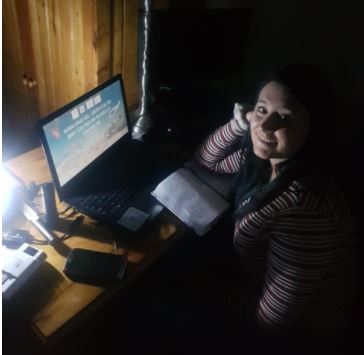
There was a great shuffling of seats and reaching for (Canadian) beer when Natasha settled down to give her presentation on perceptions of predators for invasive African Clawed frogs in France

INVASIVE CLAWED FROG, XENOPUS LAEVIS, CAN IDENTIFY LOCAL PREDATORS REGARDLESS OF COEXISTENCE TIME
Natasha Kruger, Anthony Herrel, Jean Secondi, and John Measey
Invasive species are exposed to novel predators after their establishment in a novel environment. Defences against novel predators may not be efficient at least at an initial stage. The presence of an anti-predator defence is an important parameter that may determine the ability of local communities to control the expansion of invasive populations. The African clawed frog, Xenopus laevis, is a globally invasive amphibian. In western France it faces predators functionally similar to predators found in its native range (South Africa), however, its invasive range has expanded to overlap the range of an invasive crayfish predator. We tested whether naïve X. laevis tadpoles from the invasive French population exhibit anti-predator response to local predators, and whether the response depends on the degree of relatedness with predators encountered in the native range of the frog. Alternatively, if naïve tadpoles may express generic neophobia to any cue they are not familiar with. We exposed naïve lab-reared tadpoles to a non-predator water snail, Planorbarius corneus, a native beetle, Dytiscus dimidiatus, and an invasive crayfish, Procambarus clarkii. Species of the Dytiscus genera are present across southern Africa while no related species to crayfish occur in X. laevis’ native range. We found that X. laevis tadpoles innately reduce their activity when exposed to D. dimidiatus and P. clarkii stimulus cues. The innate response to P. clarkii indicates that X. laevis tadpoles are not naïve to the invasive crayfish. Thus, limiting the effects of these predators on the control of X. laevis, however, previous studies have found that P. clarkii mitigate the effects of other invaders. The complex interactions between co-invaders are essential to explore.
Then James provided his overview on the rapid exolution of size in invasive island populations of Guttural Toads:

SHRINKING BEFORE OUR ISLES: THE RAPID EXPRESSION OF INSULAR DWARISM IN THE INVASIVE POPULATIONS OF GUTTURAL TOAD (Sclerophrys gutturalis) IN MAURITIUS AND RÉUNION
James Baxter-Gilbert, Julia L. Riley, Carla Wagener, Nitya. P. Mohanty, and John Measey
Island ecosystems have traditionally been hailed as natural laboratories for examining phenotypic change, including dramatic shifts in body size (e.g., island gigantism or insular dwarfism). Similarly, biological invasions can drive rapid localised adaptations within modern timeframes. Here we compare the morphology of two invasive guttural toad (Sclerophrys gutturalis) populations in Mauritius (est. 1922) and Réunion (est. 1927) to their genetic source population from Durban, South Africa. We found that female toads on both islands were significantly smaller than mainland counterparts (reduction in body size by 33.9% and 25.9%, respectively), as were males in Mauritius (22.4%). We also discovered a significant reduction in the relative hindlimb length of both sexes, on both islands, compared to mainland toads (ranging from 3.4 - 9.0%). Our findings suggest that the dramatic reshaping of an invasive amphibians’ morphology, leading to insular dwarfism, can result in less than 100 years.
James and Natasha during the meeting with their fellow delegates
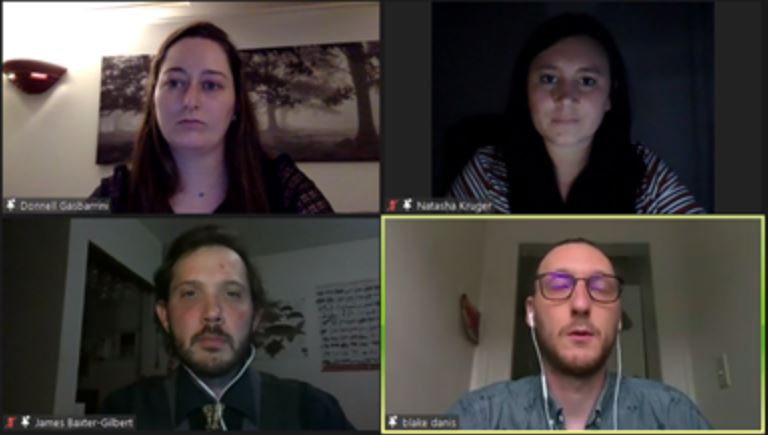
...and who could forget how James dressed up for his travelogue. All in the name of the show folks...

